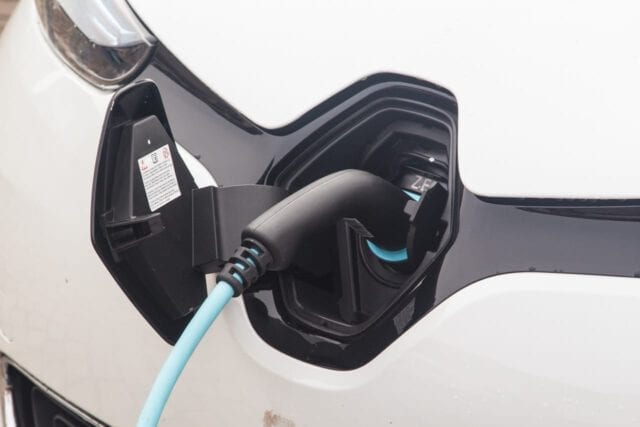Samochody elektryczne uznawane są za rozwiązania znacznie bardziej sprzyjające środowisku, niż ich spalinowe odpowiedniki. Z punktu widzenia emisji spalin w trakcie użytkowania, tak w istocie jest. Inaczej jednak sprawa wygląda, gdyby jej się przyjrzeć kompleksowo – z procesami produkcyjnymi włącznie.
Problem z produkcją litu
Okazuje się, że ekologiczne aspekty samochodów elektrycznych należy rozpatrywać w nieco szerszym spektrum. Konkretnie – problem związany jest z procesami produkcyjnymi, które mogą mieć negatywne skutki dla środowiska. Ebile zasilane są energią elektryczną, magazynowaną w bateriach litowo-jonowych, zaś ich wyprodukowanie emituje znaczne ilości dwutlenku węgla do atmosfery. Tak wynika z badań przeprowadzonych przez Szwedzki Instytut Badań nad Środowiskiem na zlecenie rządu Szwecji.
Czytaj także: Właściciele aut elektrycznych wkrótce zapłacą więcej >>>
Zaskakujące wyniki
Mats-Ola Larsson z Instytutu, który uczestniczył w badaniach, wykonał obliczenia, które dają informację na temat emisji dwutlenku węgla do atmosfery w wyniku produkcji baterii do Nissana Leafa – jednego z najpopularniejszych samochodów elektrycznych. Wyniki są zaskakujące. Okazało się, że w trakcie tego procesu do atmosfery przedostaje się tyle zanieczyszczeń, ile wyemitowałby codziennie użytkowany pojazd z silnikiem Diesla przez 2 lata i 9 miesięcy. Z kolei produkcja baterii do Tesli to równowartość 8-letniego użytkowania spalinowego samochodu.
Pozyskiwanie energii nie zawsze jest ekologiczne
Wątpliwości pojawiają się również w odniesieniu do branży energetycznej. O ile w przypadku Norwegii prąd pozyskiwany jest głównie z hydroenergii, to np. w Polsce w dalszym ciągu energia elektryczna produkowana jest w większości w elektrowniach węglowych. Ich udział w łącznej produkcji wynosił aż 82% w 2017 roku.
Czytaj także: Pierwszy autonomiczny kontenerowiec w 2020 roku? >>>
Problemy z zasobami litu
Nie tylko emisja dwutlenku węgla jest problematyczna z punktu widzenia zastępowania silników spalinowych elektrycznymi odpowiednikami. Okazuje się również, że światowe zasoby litu mogą nie wystarczyć, by w pełni zaspokoić popyt na te samochody. A tych jest sporo – szacuje się, że na całym świecie użytkowanych jest ok. 750 milionów aut z silnikami spalinowymi.
Silniki spalinowe – problem nie tylko z CO2
Warto dodać, że nie tylko dwutlenek węgla jest emitowany przez silniki spalinowe. Mówi się o nim najczęściej, jednak w udziale motoryzacji znajduje się także wydzielanie wielu innych groźnych dla życia substancji. W wyniku spalania paliw do atmosfery dostają się również takie substancje, jak:
- tlenek węgla CO (tzw. “czad”),
- węglowodory HC oraz pochodne,
- tlenek azotu,
- tlenek siarki itp.
Ponadto procesy produkcyjne, w efekcie których powstają pojazdy spalinowe, również wyróżniają się emisją zanieczyszczeń do atmosfery. Nie bez znaczenia pozostaje oddziaływanie na środowisko całej branży naftowej. Zarówno wydobycie, jak i dystrybucja tych dóbr nie jest obojętna dla środowiska naturalnego i kwestią dyskusyjną pozostaje, czy aspekty produkcyjne ebili są mniej przyjazne pod tym kątem.
Czytaj także: Rozmawiasz przez telefon za kierownicą? Stracisz prawo jazdy >>>
Potrzebne badania i raporty
Rozstrzygnięcie kwestii czy użytkowanie i produkcja samochodów elektrycznych są szkodliwe dla natury wymaga większej ilości badań oraz raportów porównawczych. W obiegowej opinii panuje przekonanie, że użytkowanie tych pojazdów jest tzw. “zero emisyjne”. Jak się okazuje, biorąc pod uwagę procesy produkcyjne, ta emisja zanieczyszczeń wcale nie jest zerowa. Kwestią dyskusyjną pozostaje czy auta spalinowe w szerszym spektrum są mniej czy bardziej przyjazne naturze. W obu przypadkach należy uwzględnić wiele aspektów, począwszy od produkcji, przez dystrybucję, na codziennej eksploatacji kończąc.





















